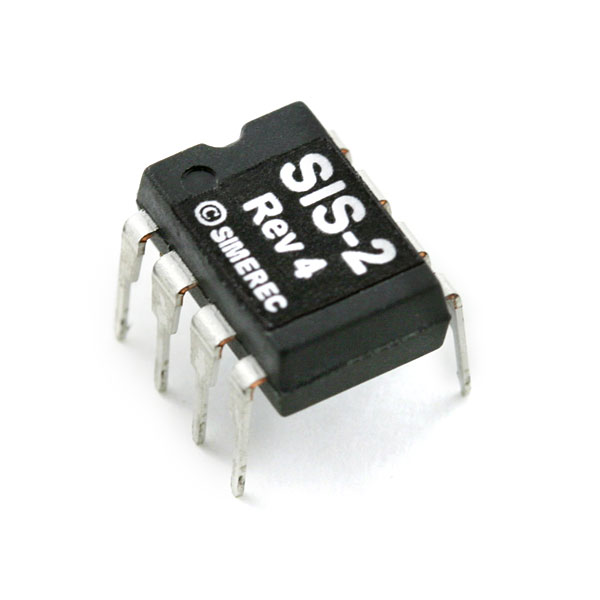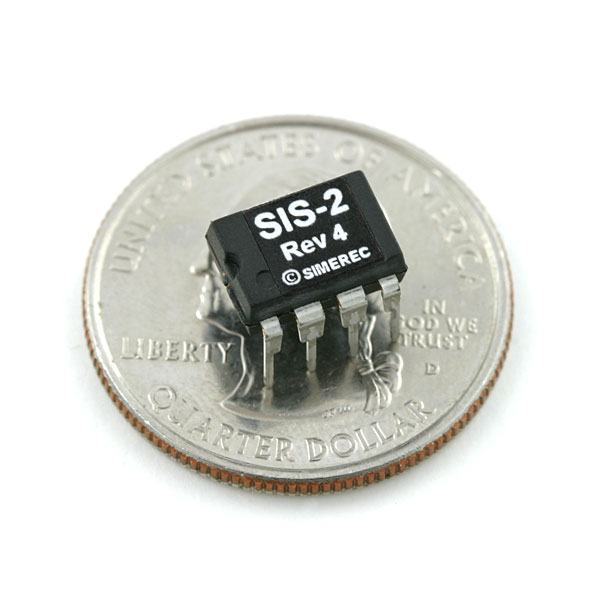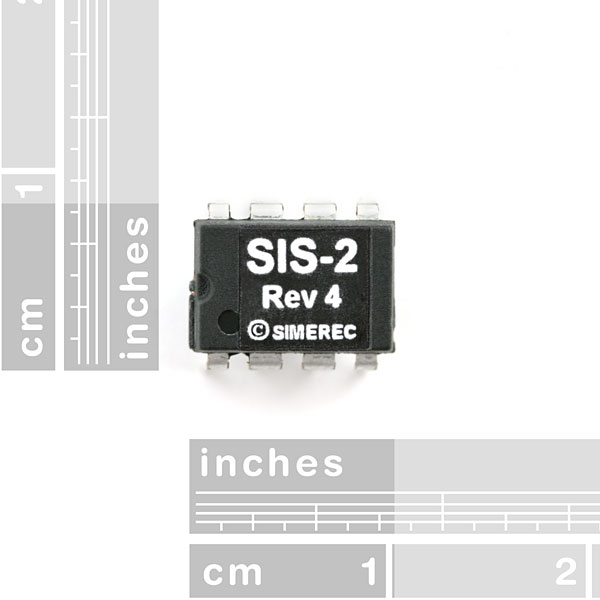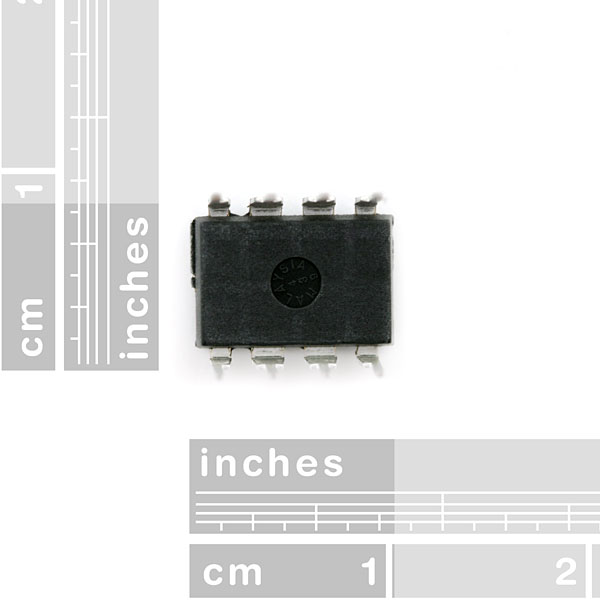Programmable IR Receiver - SIS-2
The SIS-2 monitors an IR receiver, and when a certain remote code is detected, an output pin will toggle. Two outputs are available and any code on any remote can be taught to the SIS-2. This makes it simple to implement an infrared (IR) remote controllable switching solution for a wide variety of applications. When used with an inexpensive IR receiver module, the SIS-2 recognizes IR signals from 2 independent IR remote control sources, and provides 2 modes of switching for your application.
The IR sources can be from the same or multiple remotes. Works with over 99% of IR remotes, both universal and dedicated types. IR code is easily “taught“ by user with a few simple button presses on the IR remote. IR code is stored in non-volatile, re-programmable memory. Applications include switching and on/off control of two sources, volume control, digital pots, and servos.
Want to build an ultimate universal remote? Check out this popsci article!
Programmable IR Receiver - SIS-2 Product Help and Resources
Core Skill: Programming
If a board needs code or communicates somehow, you're going to need to know how to program or interface with it. The programming skill is all about communication and code.
Skill Level: Competent - The toolchain for programming is a bit more complex and will examples may not be explicitly provided for you. You will be required to have a fundamental knowledge of programming and be required to provide your own code. You may need to modify existing libraries or code to work with your specific hardware. Sensor and hardware interfaces will be SPI or I2C.
See all skill levels
Core Skill: Electrical Prototyping
If it requires power, you need to know how much, what all the pins do, and how to hook it up. You may need to reference datasheets, schematics, and know the ins and outs of electronics.
Skill Level: Competent - You will be required to reference a datasheet or schematic to know how to use a component. Your knowledge of a datasheet will only require basic features like power requirements, pinouts, or communications type. Also, you may need a power supply that?s greater than 12V or more than 1A worth of current.
See all skill levels
Comments
Looking for answers to technical questions?
We welcome your comments and suggestions below. However, if you are looking for solutions to technical questions please see our Technical Assistance page.
Customer Reviews
4.5 out of 5
Based on 2 ratings:
Interesting gadget, compliments some of the Ir remotes I have collected
Required additional purchase when building JAMECO`s universal remote kit also the relays must be purchased separately, but I had some. went together easily worked first try fabbed boards with my circuitry (similar to the SIMERTEC evaluation module) Fun!
Fine Product!
No Problems, work exactly like the description, extreme low power consumption, easy programming. Fast delivery, but very high custom taxes for import in switzerland, not your fault!





Here's a breakout/eval board for this chip: https://www.tindie.com/products/AtomSoft/sis-2-developement-board/
Not sure if useful but that popsci article is: http://www.popsci.com/diy/article/2008-10/make-master-remote
"popsci article!" link is dead
Hello there, can any one please tell me how to program OUT 2 at pin#2 ??? i successfully programmed out1(pin#3) to some button , but can't program out2(pin#2) to another button.... thanks in advance
Verify that pin 4 is connected to Vdd. This should fix your problem.
Used one of these about two years ago to modify an old art deco lamp to remote control for the wife. It's been working great and so I decided it was time to upgrade the lighting in our living room as well and built a version of indirect flood lighting off the vaulted ceiling that works like a 3 way lamp - turns on floods additive (1,2,4 at a time, OFF code at anytime turns all out). Used the expensive LED PAR38 Warm White lamps (only 100w w/all on). Couldn't be more pleased with the result. This chip is awesome!
Do you guys have plans to carry the SIS-7C?
I used this with the SEN-08554 IR receiver and with a Windows Media Center compatible remote. The combination works well so far in my tests. I have set the SIS-2 to discrete button mode so that I can use it to toggle power to my media center PC. I will use an Arduino board between them to handle the logic of commanding the power switch on the computer and to flash a LED to tell me the status of everything.
The IR Receiver is optimized 38kHz and the WMC remotes are running at 36 kHz but this does not seem to be a problem so far.
What I have working so far is that one remote control button will turn on the output regardless of how many times I press it. The other button will turn off the output regardless of how many times I press it.
I hope this little bit of information may help others...
I imagine I could use this for "dirty" remotes that don't operate at 38Khz and that have their own "codes"; like the remotes for cheap RC toys, am I right? I would want to use this for the Lego Power Functions.
This is an infrared receiver and will not function for any sort of radio-controlled implementation.
Unless, of course, these RC toys are using infrared (which would make them very picky and hard to use :P).
Yeah, sorry. I didn't explain that the PF remote control stuff is IR. There is more info on the PF code here here. Thanks
Many of the new cheap indoor R/C Helicopters use IR to control... In fact all of the 4 I have owned (different cheap asian imports) used IR.
They're not at all picky or hard to use in their intended environment; indoor rooms at less than 40 feet away.